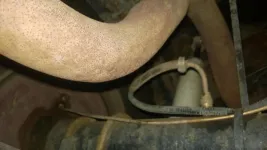E-locker - A small question, could be important though
Hedgehog
Always Off-Roading Jeeper
- Posts
- 9,370
- Thanks
- 4
- Location
- Tucson/Marana Arizona
- Vehicle(s)
- -1975 Jeep CJ5, 360 V8, Headers, Duel Exhaust,T15 transmission, D-20 Transfer case, Twin Stick Conversion, Warn 8274 Winch
-1951 Willys Wagon, 4 cylinder, "F" head, little rust, very close to stock
I've mentioned many times that a few months ago an E-locker was installed in the rear axle of my CJ. It has also been mentioned that I haven't got the electricity installed yet. Well, the wires are attached and run under the CJ to the dash area. This has always bothered me though. The wires are flimsy and sort of bounce around down there. We all know that movement like that will eventually lead to failure. So, I'm wondering how you folks with E-lockers or for that matter the similar ARB system run your lines to keel them safe?
A long awaited dash project is about to be finished up, this will include properly wiring everything and finish some odds and ends on the heater, cables and water handling drain hoses.
A long awaited dash project is about to be finished up, this will include properly wiring everything and finish some odds and ends on the heater, cables and water handling drain hoses.






